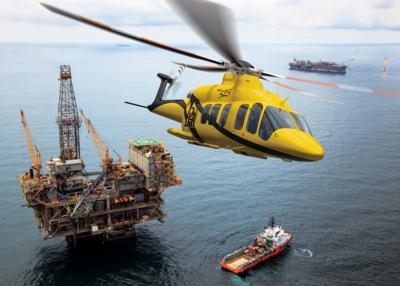New Frost & Sullivan's Market Insights Analyses Oil And Gas Helicopters Segment
In 2013, the oil and gas helicopter market segment was forecast to account for nearly 30% of the future procurements over the next 5 years. Commercial operators were not only looking to replace their aging rotorcraft, but also were looking to cross longer distances with the premise of deepwater platforms requiring more resilient helicopters with greater endurance and payload.

In this regard, a buying spree has been noticed in the helicopter industry over the last 5 years, with numerous multi billion purchase agreements signed with original equipment manufacturers (OEMs) during big helicopter and aerospace trade shows around the world.
However, this was before 2014 and the oil price drop. Almost 2 years later, there is still little perspective on when oil and gas prices will recover. Some market forecasts remain quite pessimistic and do not envision a recovery over the next 5 years. Besides, the latest news in early December 2015 were even mentioning a continued decline, with Brent prices averaged $40 and below.
"This triggers serious concerns across the helicopter industry: how this decline is impacting pending Oil and Gas helicopter deliveries? Is it still reasonable to envision strong order backlogs?" questions Alix Leboulanger, Industry Analyst for Aerospace & Defense at Frost & Sullivan.
"Several pessimistic market crash scenarios can be envisioned, the majority of them being translated by cancelled orders, personnel layoffs, less visibility on production lines and severe impact on platform prices, with quite a negative effect on future procurements across the entire civil market. Besides, OEMs will have to face tougher competition from re-sellers and lessors," predicts Alix Leboulanger.

Most importantly, what could happen to medium-size helicopters that represent more than 60% of the new procurements and that are one of the biggest sources of revenue for OEMs? These multi-million platforms need to be recycled if the market was to actually really crash. "This is where the challenge is quite problematic: Are there any other applications where they could fit in? There are very few segments across other domains capable of absorbing such helicopters," says Leboulanger.
The following question is: what can be done to avoid such a catastrophic situation? "There are some niche applications across non-traditional markets that can be undertaken by medium sized helicopters initially configured for offshore transport, but at a certain cost," continues Leboulanger. "This is where helicopters OEMs and operators could invest, but these will be risky and costly investments, mostly involving platform conversion, reconfiguration and personnel training. Very few players will be financially able to make such a bet. This will also eventually call for further market consolidation."
(Source: Frost and Sullivan news release. Images from file)
 ANN's Daily Aero-Term (05.19.24): Back-Taxi
ANN's Daily Aero-Term (05.19.24): Back-Taxi Aero-News: Quote of the Day (05.19.24)
Aero-News: Quote of the Day (05.19.24) Aero-News: Quote of the Day (05.20.24)
Aero-News: Quote of the Day (05.20.24) ANN's Daily Aero-Term (05.20.24): Blind Speed
ANN's Daily Aero-Term (05.20.24): Blind Speed ANN's Daily Aero-Linx (05.20.24)
ANN's Daily Aero-Linx (05.20.24)




